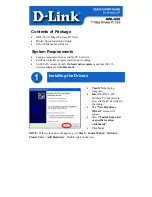
Installing Your
Programmable Controller
Chapter 4
4-4
Category-2 Conductors
Category-2 conductors are, in general, low-power conductors that are,
therefore, less tolerant of noise than category-1 conductors and should also
generate less noise. They include:
serial communication cables — They connect between processors or
to remote I/O adapter modules, programming terminals, computers, or
data terminals.
low-power dc I/O lines — They connect to dc I/O modules that are
rated for low power and have input circuits with short time-constant
filters to detect short pulses. They typically connect to devices such as:
- proximity switches
- photo-electric sensors
- TTL devices
- encoders
- motion-control devices
- analog devices
low-power ac-dc I/O lines — They connect to I/O modules that are
rated for low power such as low-power contact-output modules.
Category-3 Conductors
Category-3 conductors interconnect the processor components within an
enclosure. Processor cables include:
processor power cables — provide backplane power to
processor components
local I/O interconnect cables — connect to local I/O adapter modules
processor-peripheral cables — connect processors to their
communication interface modules
Raceway Layout Guidelines
The following are general guidelines for routing wires and cables for your
processor system. These guidelines apply to wire and cable routing both
inside and outside of the enclosure. Follow these guidelines to guard
against coupling noise from one category conductor to another.
All category-1 conductors can be routed with machine power
conductors of up to 600V ac (feeding up to 100 hp devices) if this does
not violate local codes. Article 300-3 of the National Electrical Code
requires that all conductors (ac and/or dc) in the same raceway must be
insulated for the highest voltage applied to any one of the conductors in
the raceway.
















































